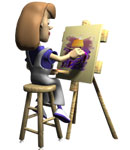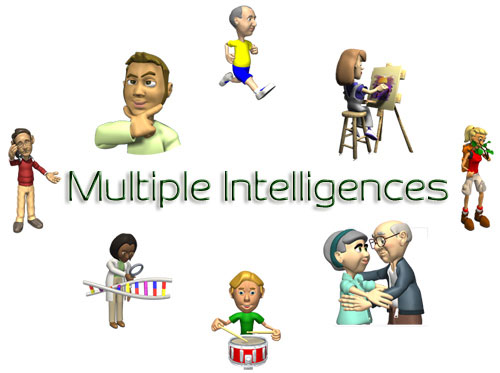 Visual-Spatial Intelligence
Visual-Spatial Intelligence
In Frames of Mind, Gardner (1993) says those with Visual-Spatial intelligence have the power to create mental images. They have the ability to look at things and picture in their minds how they look from different angles, and can do this three dimensionally. They can also reproduce forms they see and change them into new forms and/or show them from different angles. They have the ability to hear a description of something and to picture the item or scene from that description. They can also hear the description of a task (fold paper a certain way, for example) and do it correctly. They have a sensitivity to the various lines of force that enter into visual or spatial displays (tension, balance, and composition). They can perceive the physical world accurately and recreate aspects of their visual experiences.
- Internal Imagery: They have the ability to see things in their mind's eyes.
- Physical Creators: They can create physical likenesses through drawing, sculpture, etc.
- 3-D Imagery: They see things in their minds three dimensionally.
- Perceive Patterns: Aware of and understand different kinds and dimensions of patterns.
- Abstract Designs: They can create abstract, as well as exact, likenesses of things.
- Visual Representations: They can make visual representations of things they picture in their minds.
- Astute Observers: They see minutiae others might miss.
- Mazes and Puzzles: They can solve visual or verbally described mazes or puzzles.
- Spatial Navigators: They know where they are in space and can get around cities or the countryside easily. Often good map readers, they can picture what something looks like from a map or a verbal description.
- Image Creators: They have the ability to create new images from scratch.
- Photographic Memory: Often they have a photographic memory.
- External Perceivers: They are aware of what is around them.

